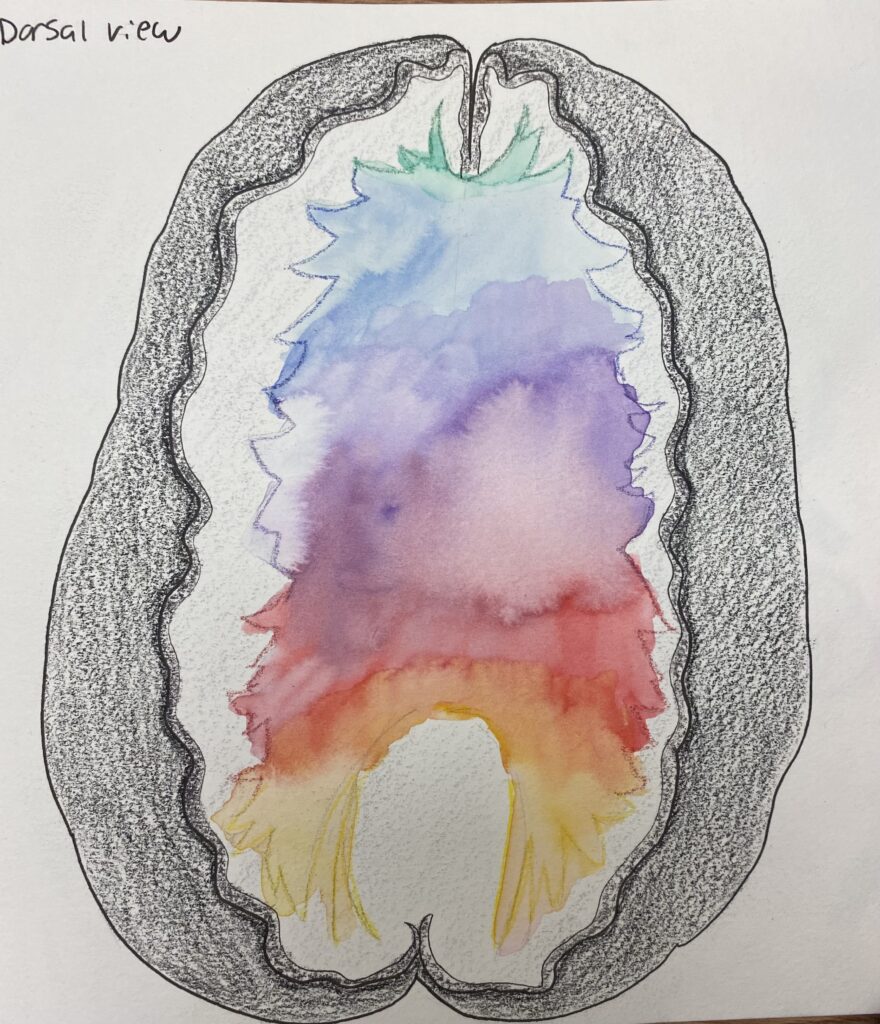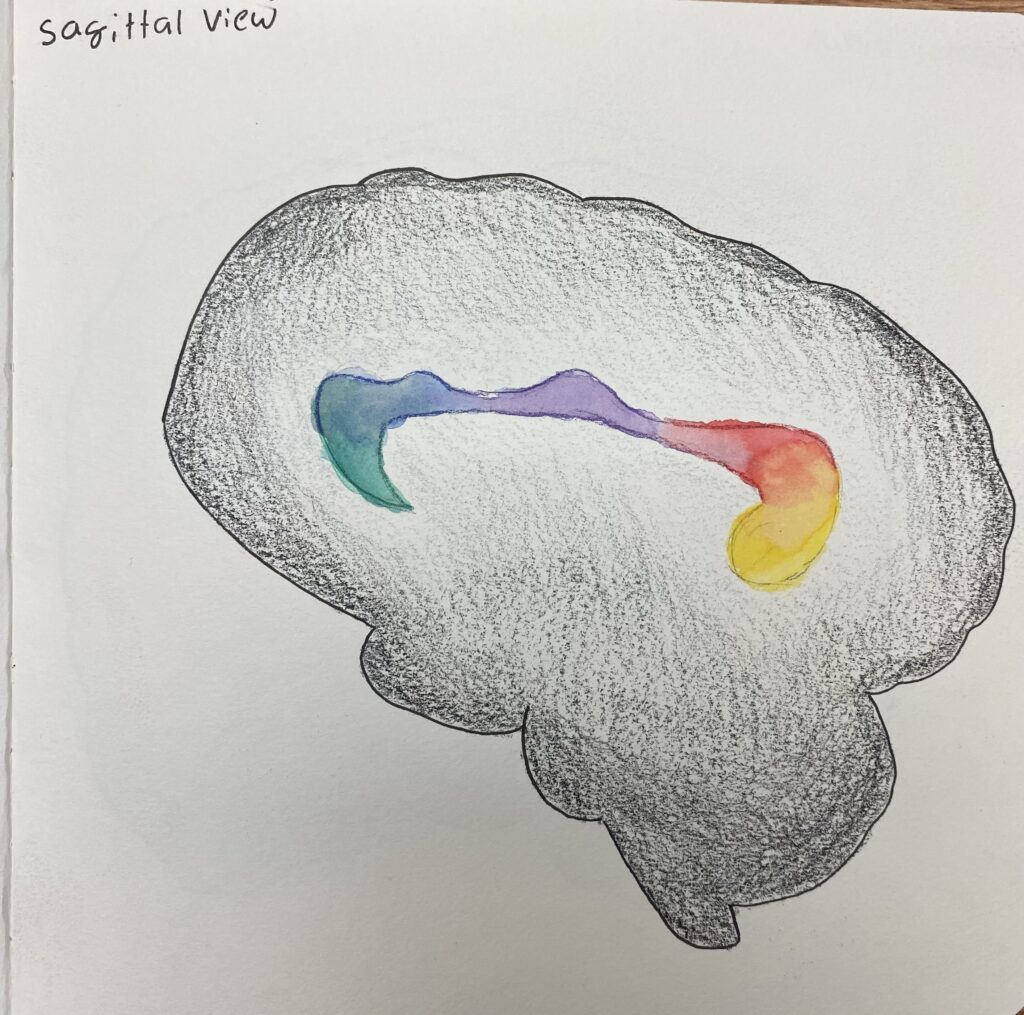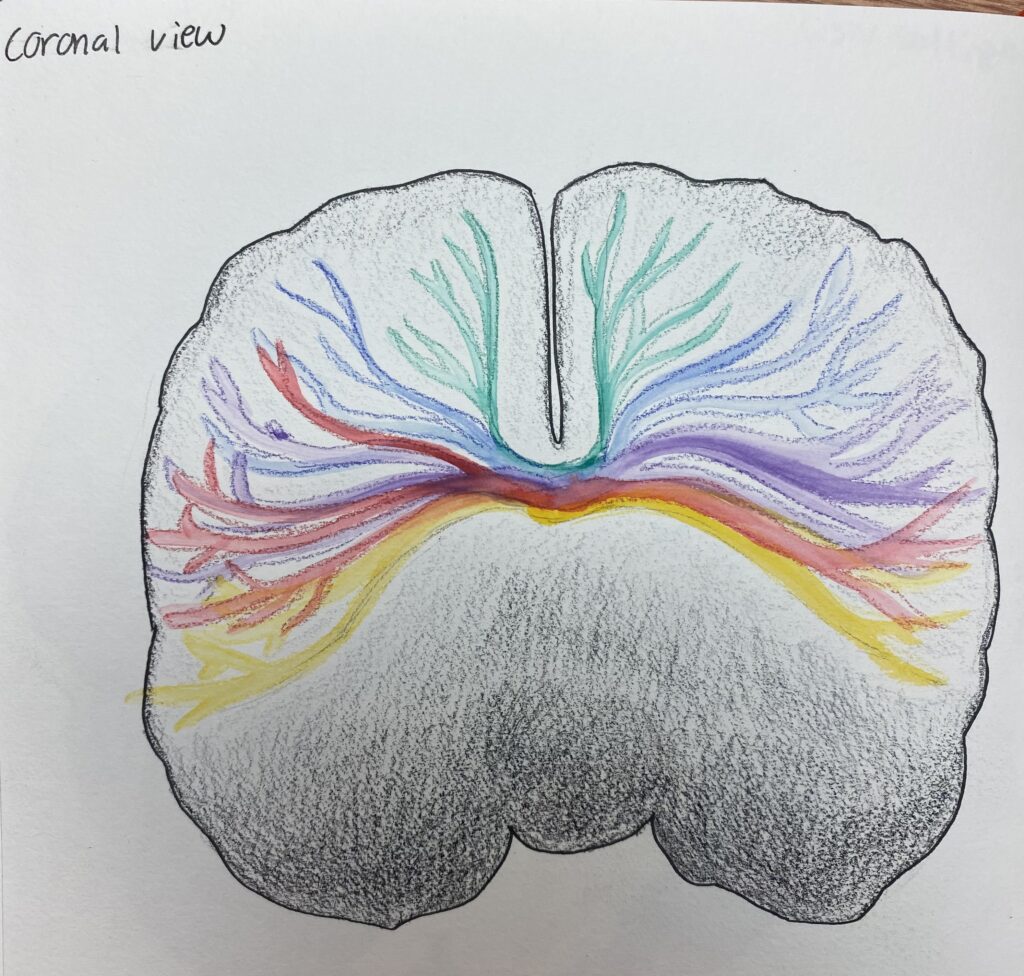


With my artwork for this project, I chose to draw the corpus callosum as literally as I could. I used watercolor to show that the five regions are not set in stone and they blend together. Green is for the rostrum, blue is for the genu, purple is for the body, red is for the isthmus, and yellow is for the splenium. All of these are general locations as I only had one reference for the side view of where the sections were. The rest of the brain is colored in monochrome to draw attention to the corpus callosum in the middle.

Abstract:
The corpus callosum is a large mass of neural tissue that connects the two hemispheres of the brain and allows them to communicate with each other. This structure is very important to brain function as a whole. Patients who have conditions such as epilepsy may have this structure cut to prevent their frequent seizures from crossing the gap to the other side of the brain. When the corpus callosum of a developed brain is severed, it will be unable to form words and thoughts about what the eyes see. This happens because the right brain, which processes visuals and creative ideas, cannot send signals to the left brain, which is used for logic and speech. People who were born with a dysfunctional corpus callosum actually have milder symptoms regarding brain connectivity. Instead of a complete separation between the creative half of the mind and the logical half of the mind, these patients might experience some social anxiety or issues with problem solving. The corpus callosum contains five sections that connect different parts of each sphere to each other. These sections are called the rostrum, the genu, the body, the isthmus, and the splenium. This art piece displays the regions of the corpus callosum as different water colors that are bleeding together because each of the regions overlap. Additionally, the colorfulness of the corpus callosum stands out against the different shades of black and grey that represent the rest of the brain. To further emphasize how the fibers of the structure connect the two brain hemispheres, three different views of the brain were drawn: from above, from the side, and from the front.